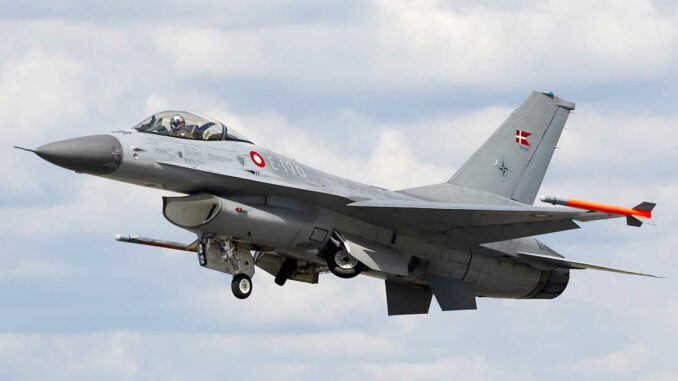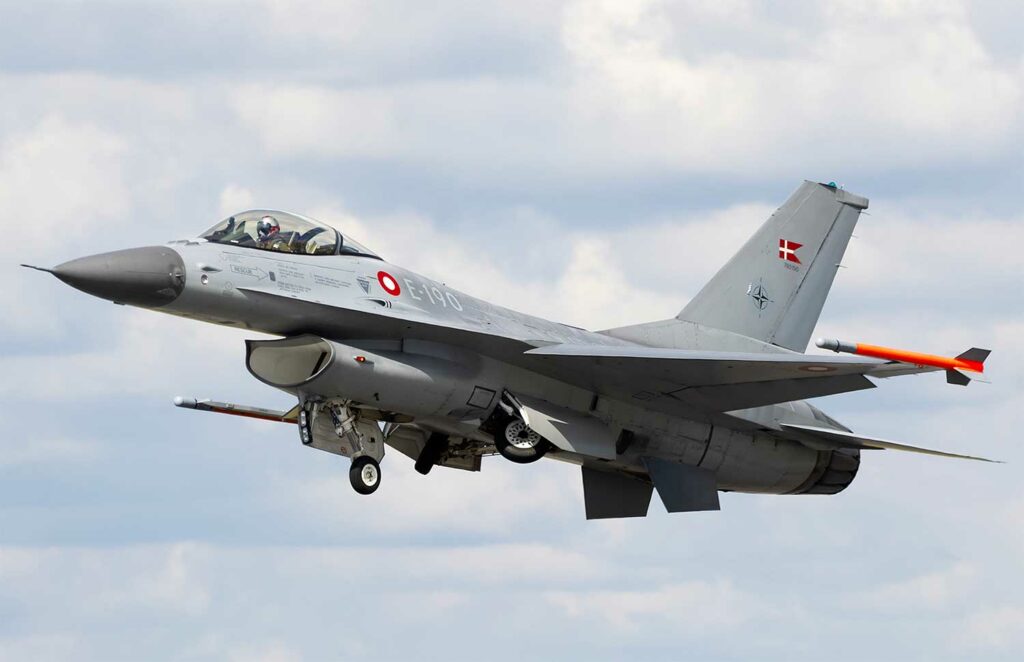
On July 29, 2025, the Netherlands and Denmark confirmed the acceleration of F-16 deliveries to Ukraine, despite major logistical challenges.
On July 29, 2025, the governments of the Netherlands and Denmark officially confirmed the acceleration of deliveries of F-16 Fighting Falcon fighter jets to Ukraine. This decision aims to strengthen Ukraine’s air defense in the face of growing military pressure from Russia. Already engaged in logistical and technical support for Kyiv, these two countries are moving into the operational phase, transferring modern aircraft more quickly than initially planned to an air force undergoing restructuring. This dynamic, while essential to rebalance the balance of power in Ukrainian airspace, imposes a series of logistical and human constraints, particularly in terms of pilot training and maintenance. On the ground, these deliveries could provide Ukraine with increased interception capabilities, but their integration into the Ukrainian arsenal raises major tactical challenges. While Moscow denounces this operation as a provocation, Western allies are taking a stance of expanded military support, rooted in the long term.
A landmark political decision in a multinational context
The acceleration of the transfer of F-16s to Ukraine is not based on a unilateral decision, but on close coordination between several NATO members. Denmark has committed to providing a total of 19 aircraft, six of which were delivered at the end of 2023, with eight more in 2024 and the last five expected in 2025. For its part, the Netherlands has promised up to 42 units from its fleet currently being withdrawn, some of which have already been partially reconditioned.
This air coalition does not stop with these two countries. Belgium, Norway, and other partners have expressed their willingness to deliver or train, bringing the total number of F-16s destined for Ukraine to around 85. This cooperation was made possible by the green light given by the United States in August 2023, authorizing countries that own US-made F-16s to transfer them to Kyiv, provided that Ukrainian pilots are properly trained.
This is therefore a structured and conditional transfer, the main objective of which is to provide Ukraine with modern air defense capabilities capable of countering cruise missiles, strike drones, and potentially engaging Russian aircraft in air-to-air combat. This acceleration is a direct response to the increase in Russian strikes and the saturation of Ukrainian ground-to-air defenses. It is accompanied by diplomatic considerations, as the deliveries have been designed not to cross certain informal red lines set between NATO and Russia.

Complex and technically demanding operational integration
The arrival of F-16s in the Ukrainian Air Force will require a profound transformation of operational practices inherited from the Soviet era. Most Ukrainian pilots are trained on MiG-29s or Su-27s, aircraft with a very different philosophy. Switching to an aircraft such as the F-16, with digital avionics, integrated Western weaponry, and specific flight doctrines, requires a complete overhaul of the chain of command, maintenance, and tactical employment.
Pilot training began in September 2024 at the European F-16 Training Center (EFTC) in Fetești, Romania. Other modules are being taught in the United States, Denmark, the United Kingdom, and France. The entire training program, which is conducted in a war-like environment, is condensed into a few months, whereas in a standard context it would take four to six years. These shortened timelines require rigorous pilot selection, intensive use of simulators, and ongoing technical support.
On the maintenance side, Ukrainian technicians must learn how to operate the F-16AM/BM Block 15 MLU versions. This requires mastery of radar systems, electronic countermeasures, on-board diagnostics, and specific digital tools. The United States has shipped several F-16 airframes withdrawn from service to serve as spare parts banks, along with technical manuals, support equipment, and onboard software.
Washington has allocated a budget of $310 million to cover all technical support, including simulators, ground equipment, spare parts, and the adaptation of maintenance infrastructure in Ukraine or at fallback bases in Poland or Romania. The coordination of this logistics, coupled with the rapid upskilling of Ukrainian personnel, is one of the key elements in ensuring the operational viability of the aircraft delivered.
A tangible but limited short-term effect on the Ukrainian theater
The entry into service of the first F-16s has been confirmed for summer 2024. According to several military sources, these aircraft have already been used to intercept Russian missiles and Shahed-136 drones, which are often launched in swarms to overwhelm Ukrainian defenses. In certain situations, the F-16s offer greater responsiveness than ground-to-air defense batteries, particularly in cases of late detection or multiple threats.
Ukrainian pilots have claimed up to 20 successful interceptions of aerial targets in real-world conditions. This is a significant operational contribution, but insufficient to restore air superiority in heavily contested areas such as Donbass or the Zaporizhzhia region. Two aircraft losses have been confirmed since their deployment, due to Russian medium-range surface-to-air missiles.
Beyond interception, the F-16s can play a role in air-to-ground support, particularly with GBU-39 guided bombs or APKWS guided rockets. However, the use of such munitions requires accurate intelligence, close coordination with ground forces, and temporary superiority in the airspace. These capabilities are still under development for the Ukrainian forces.
From a strategic point of view, the impact of these deliveries is also psychological: for Kyiv’s allies, it is a matter of showing that military support is not wavering. For Moscow, on the other hand, this dynamic is a threat that must be contained. Russia has already stepped up its disinformation campaigns, accusing NATO of entering directly into war through these deliveries. The propaganda campaign is aimed as much at Western public opinion as at Ukrainian forces, in a parallel war of influence.
A doctrinal shift is essential to ensure effectiveness
The accelerated arrival of F-16s requires Ukraine to undergo a profound doctrinal shift. The centralized tactics inherited from the Soviet model must give way to decentralized structures, shorter decision-making chains, and more autonomous mission capabilities. The F-16 is a multi-role fighter, but its performance depends on how it is used: coordinated strikes, electronic warfare, interoperability with other Western platforms.
The success of this transition depends on three essential conditions. First, an increase in the number of trained pilots, with a minimum target of two qualified personnel per aircraft, i.e., 160 to 200 people for a fleet of 85 jets. Second, the establishment of sustainable logistics stocks, both in terms of ammunition and spare parts. Finally, the rapid adoption of NATO tactical standards, without which the aircraft will only be a partially exploited asset.
These F-16s do not therefore represent an immediate turning point in the conflict, but rather a potential for military transformation in the medium term. Their effectiveness will depend on Ukraine’s ability to absorb this technology, adapt it to its operational environment, and turn it into a credible offensive lever.
War Wings Daily is an independant magazine.